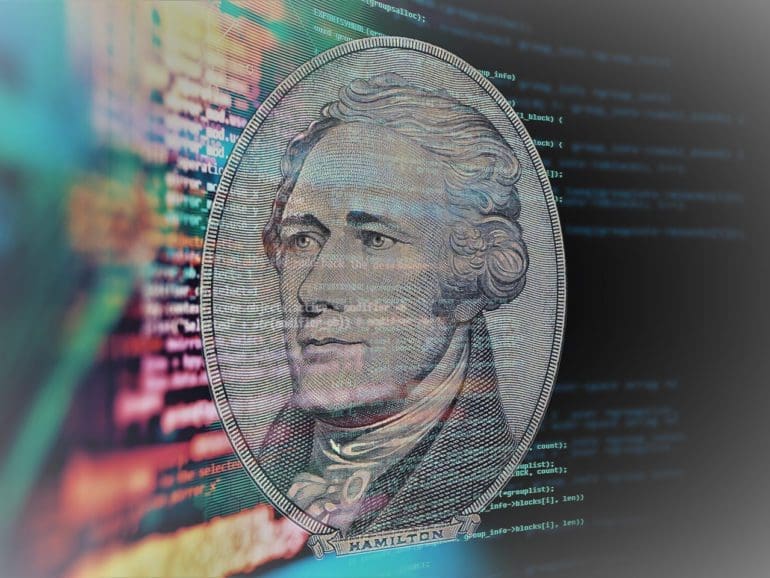On Wednesday, Lendit Fintech welcomed several central bank and policy experts to discuss the important topic of Central Bank Digital Currencies (CBDCs.)
Since before bitcoin blew up in 2018, leading financial minds the world over have been researching the implications of institutionally created currencies for use as digital cash, to settle interbank deposits, and for monetary policy development. Some even hope CBDCs can be used as free personal debit accounts for the general public if they ever become adopted.
The talk featured insights from Herny Holden, an advisor for the Bank of International Settlements, and the SVP of the Boston Federal Reserve, Jim Cunha. Expertise also came from Associate Professor of Chinese Studies at Fudan University Richard Wang, and Forbes Contributor and Chinese Economic researcher Associate Professor Sara Hsu moderated the panel.
Hsu started off the talk right where the iron was hottest: how are CBDCs important regarding the panelist’s geographic region of expertise and the competition in the financial world?
Henry Holden, who is based in Switzerland but has a global purview at the BIS, said it is not about competition. Instead, he said it’s about a better, neutral way to safeguard public goods.
“It’s about creating trust in money, but trusted money for the future. So, it’s not a sort of a competition between jurisdictions or nations; it’s instead something quite internal, something focused on the public good,” Holden said. “And it’s also about providing kind of public policy objectives that wouldn’t necessarily be catered for by the private sector, like privacy in payments.”
What is a CDBC?
Central banks focus not on making money but on supporting the banking system, where citizens and institutions keep their money. Federal Reserve banks implement monetary policy on behalf of the government and they are also banks for banks. But part of the argument for the inclusion of bank-made, government-backed digital currencies is to make fed banks more like public banks for everyone.
As Holden explained the Bank for International Settlements is an organization of central banks, owned by its 63 member institutions that want to support a stable and robust financial system. Holden’s most recent work as an advisor has focused on using CBDCs for an international payments system.
Instead of Western Union backing a money wire, what if the New York Fed (which monitors check cashing) monitors that money wire through a digital currency? Those are the types of questions Holden studies as an advisor by surveying and researching implications of new technology in banking.

The Digital Yuan
In its testing phase now, the digital yuan may be up and running as soon as the 2022 Beijing Winter Olympics
Wang remarked that, especially with the pandemic and recent moves to test out digital currencies sponsored by the Chinese government, CBDCs are becoming a potential option to promote banking inclusivity. 84% of the population is already using mobile wallets, he said.
“I think it’s a natural evolution as well. As we are entering the digital economy it is only natural that the Chinese government, the [Peoples Bank of China] is thinking about this,” Wang said. “It’s very common now, where people don’t use cash at all. As we see from the current pandemic situation with the digital currency, it helps encourage and expedite the financial inclusion, especially with people in rural China who don’t have the basic banking services.”
Wang, a Ph.D. in Risk Management with 20 years of experience leading finance and fintech companies, laid out the fast-paced goals for digital currencies adoption in China. Through partner firms like Alipay, in 2019, China began testing their system, handing out small lottery amounts to citizens. The pilot program is just the beginning, with a ramp-up to a full launch by the 2022 Winter Olympics in Beijing.
“It is a collaborative effort. For example, JingDong, [a food delivery giant] they’re giving out red envelopes, giving out lotteries to test the system. The Chengdu government has also done that they have given out about 1.85 million US dollars as a lottery to let them do this, let the resident’s test, to see their digital currency,” Wang said. “We have not seen a definitive full rollout date yet, but the 2022 Beijing Winter Olympics seems like a good indication of around when China may do more of a larger scale rollout.”
As for the US, Cunha said use cases for CBDCs are different across the world. For example, some markets like the Bahamas need an alternative to expensive cash transfers, Some markets can’t trust their native currency. He said he agreed with Henry that CBDCs could be a mechanism for public reserve banking to support private commerce. Cunha also agreed with Wang that CBDCs could help contactless pandemic markets work during the pandemic.
“In the US, Congress had made some potential moves to force the Fed to do a CBDC: They didn’t, but it was for more efficient payments during COVID,” Cunha said. “I think it’s balancing the missions of the central bank with the private sector: what’s the appropriate way of solving problems of the government, the citizens, and businesses.”
Project Hamilton
Nicknamed Project Hamilton, the Federal Reserve of Boston is building the future central banking system with the help of MIT Researchers
Cunha said that the current adoption plan for the US Federal Reserve toward CBDCs is being explored through a joint program between the Boston Fed and MIT digital currency researchers, nicknamed Project Hamilton.
In Boston, what we’re doing is technical experimentation, a project we call Hamilton,” Cunha said. “Working at MIT with the Digital Currency Initiative(DCI), they’ve been studying this deeply for years and have some of the world’s experts working at the DCI.”
Researchers are trying to build a transaction system for the future that can process tens of thousands of transactions per second. Cunha said they are working with ten central banks that are proposing policy implications to study. The Fed is looking at 40 different platforms, some based on Blockchain, some more traditional, he said.
“We’re going to publish a white paper and then create an open-source license with the code,” he said. “We want others to both to learn from what we’ve done with MIT but also to contribute to telling us what they like what they don’t like, actually contribute code.”
He said that adding technology to any system can make things faster and safer or slower and less secure. They are currently working out privacy, offline capability, programmability, and other conflicts with a new system and policy. On top of technical development, the entire project is extraordinarily political. There are innumerable interests out there, financial systems in place that a central digital currency could disrupt.
“It’s not about going to pilot (we have no approval for that) but it’s just about understanding what’s possible, spurring the research, and then being ready when decisions are made,” Cunha said. “Of course, there are political challenges; I won’t say political as it has a negative connotation, I would say there’s a lot of different interests out there that you can help solve problems but create other problems.”
Banking with Blockchain, like Bitcoin?
Privately created cryptocurrencies will always come with a misalignment of goals, as all speakers seemed to agree. Wang said that there were no other cryptocurrencies that China would work with at all.
“Well, I don’t think there are any other coins cryptocurrencies that China is going to work with,” Wang said. “Bitcoin is not allowed, trading of Bitcoin is not permitted in China, but stable coins will be interesting. Maybe they can use if backed by Chinese currency.”
Although working with the possibility that distributed ledger technology could be a platform to build banking services, Cunha was even more bearish, though he said he was not trying to trash crypto.
“I was gonna joke and say ‘stable coins are an oxymoron,’ but no I don’t think that. I think there’s a lot of value for stable coins, but they’re not all created equal,” he said. “If you have a stable coin backed by dollars, that’s the one thing, but if you have a stable coin backed by securities or crypto, it’s just riskier.”
Cunha said that right now, most stable coins are on the Ethereum network. Though he didn’t say it could be hacked, there would be a major issue for most crypto if it got hacked. Though bullish on stable coin implementation with payments network, Holden said he was happy Cunha made that joke, “because these things drive me slowly insane.”
“There’s also the fact that the central bank is a public body with a public mandate. A stable coin issuer is, is a private entity is driven by profit, and it has to make a return to its shareholders,” Holden said. “The system for a central bank is trying to pursue a broad policy to create something for the public good. The issue is trying to create a profit.”


